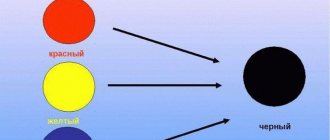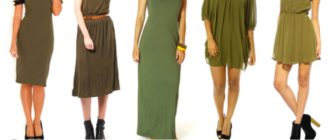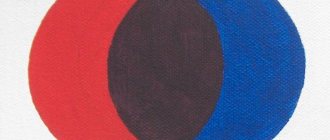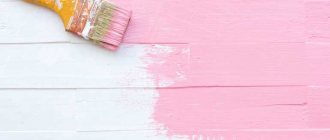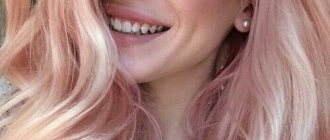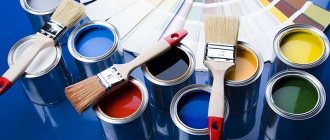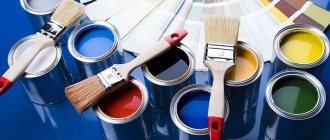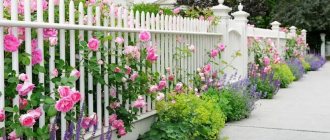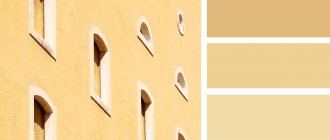A little about the origin
In understanding this issue, we need to devote a few words to the mother of pearl itself, after which this marvelous color is named. So, the foreign origin of the word will turn out to be very interesting. From many languages (German, English, Italian) this word is translated as “mother of pearls”. Why? The explanation is quite simple and also entertaining: when a foreign body gets into the shell of a mollusk, nacre particles from the shell are gradually deposited on it in layers. This is how pearls are formed. Mother of pearl itself is a pure substance. You can find it on the shell walls of some mollusks. Mother of pearl is made up of aragonite (calcium carbonate) crystals. The mineral is distinguished by its iridescent shine and strength, so it is most often used to make jewelry and accessories.
It is worth saying that mother of pearl has been known to man since ancient times. For example, in Ancient Rome it was considered a symbol of wisdom and power. The ancients believed that possessing it brings great happiness. During the reign of Empress Catherine II, not a single piece of jewelry was created without the participation of mother-of-pearl or pearls. The jewelers of the Scottish Queen Mary Stuart created true masterpieces.
Mixing acrylic-based materials
The most popular among interior designers are acrylic-based dyes. Of course, it is not at all difficult to work with acrylic paints, and the painted base acquires good water-repellent characteristics. However, these paints have the following features:
- The surface to be painted must be sanded to a perfectly smooth state;
- The paint should not be over-dried;
- An opaque shade can only be achieved with undiluted composition, and for transparency a small amount of water is required;
- You can achieve a suitable tone using a specialized acrylic-based thinner, because the thinner will increase the drying time of the coloring agent;
- Apply the paint and varnish with the edge of the brush;
- Mix colors only with a clean brush.
You can achieve a suitable tone using a specialized acrylic-based thinner.
About cars
Note that today the pearlescent color of the car is very popular. And this is not surprising: any car owner wants his beauty to shine and shimmer with delicate shades in the rays of the warm sun. However, it is worth saying that as soon as this color appeared in the automotive paint palette, only expensive, luxury cars began to be painted with it. Only wealthy people can afford such a luxury, because it is very difficult to achieve smooth color transitions. Why is pearlescent color so unique and desirable? It's simple: it can shimmer from golden to pink, sparkle with shades of silver, and in the shadows shimmer soft cream.
Mixing experiments: what you need to know in advance
We dye our hair ourselves: how to mix colors correctly to get the desired shade
The range of colors that people use is limitless. But the main colors of the spectrum are: blue, yellow, red. They exist on their own and do not contain other pigments. By mixing them in different proportions we can get the tone we need. If the ratio of tones is the same, you get one paint, but if you change the proportions, you get a completely different color.
Green is also a derivative of basic colors. By mixing yellow + blue we get green. Add scarlet to it and you get bright brown.
The colors that are present in the rainbow are called chromatic. They absorb and reflect light waves of different wavelengths. We perceive the waves that are reflected from an object as its color. For example, a leaf of a tree absorbs all tones except green. It reflects green and we see it as such.
Black, white, gray - achromatic. A dark color eats up the waves completely, while a snow-white color displays them.
All existing shades interact with one another, which leads to such diversity in our beautiful world.
About hair
But still, pearlescent color is most often used in hair dyes. Moreover, pearlescent shades have been on the championship podium for several seasons in a row. Thanks to this shade, you can achieve excellent results that no other paint can give:
In hairdressing, pearl color is a special translucent shade that makes hair shine. Women have a misconception that this shade can only be present in light-colored paints, but this is absolutely not true. Modern cosmetic brands today offer pearlescent shades in light brown, red and even chestnut shades.
It is worth mentioning that mother-of-pearl is also called a certain rainbow of shades that harmonize with each other and create a delightful diamond shine. As in the automotive industry, the pearlescent color in hair dye has a complex structure: light can be both reflected and refracted. Mother of pearl can look different on different lengths of hair, shining, shimmering and creating all sorts of shades.
Hair dye mixing technology
So, we have a scale of the first 10 digits. What happens if we mix 2 lightness levels? It's simple: add up the numbers and divide in half. For example, we mix 6 and 8 and get 7. We are looking for the arithmetic mean.
We found the base (dark or light) and move on to the nuances. How to give your hair cool or, for example, golden shades? Let's look at examples.
For light copper-golden - 7/44 and 7/34.
For beige blonde - 8/76 + 8/71 + 8/74.
For a very light pearly blonde - 10/65 + 10/76.
For juicy red chocolate: 5/5 + 5/7 + 5/0.
We distribute the proportions of a particular paint based on the desired intensity of the color nuance.
Kapous, Cream hair dye Studio Professional 9.26
Color: very light pink blond. Volume: 100 ml.
(101)
189 RUR
189 RUR Buy
Kapous, Cream hair dye Studio Professional 9.23
Color: very light beige pearlescent blond. Volume: 100 ml.
(213)
189 RUR
189 RUR Buy
Kapous, Cream hair dye Studio Professional 10.02
Color: pearly blonde. Volume: 100 ml.
(222)
189 RUR
189 RUR Buy
Estel, Cream color Princess Essex 9/76
Color: blond brown-violet/delicate lily. Volume: 60 ml.
(127)
180 rub.
We'll order soon
About lips
Our story won't be complete if we don't mention makeup. Mother of pearl is also used in lipsticks. However, you need to use its generous shine wisely. If a lady wants to highlight the natural beauty of her lips, this shade is perfect for this purpose. But if the lips have physiological defects or they are too full, then the pearlescent color will only ruin the situation and focus the attention of others on the shortcomings. Remember that dense pearl shades of lipstick are best used in evening makeup as highlights.
Nacre
(from German Perlmutter - “mother of pearls”) - the inner layer of shells of freshwater and marine mollusks, is an organic-inorganic composite of natural origin. Pearls and mother-of-pearl have almost the same composition.
Mix colors to get a light beige shade
You will need to provide yourself with a certain set of basic colors. Combining them correctly will result in a light beige shade that you can paint with. The colors are as follows:
By gradually adding each color, they are all combined on a tablet or palette. If cardboard is used instead, it should be white so that, ultimately, the artist understands what color the result is.
How to mix? Scarlet, sunny and heavenly paints are combined in equal parts with a brush. Before dipping your brush into the next shade, you should clean it in a container of water. This combination will form the basis of the future shade. A dark shade should form on the palette - this indicates proper mixing. Next, the artist will lighten it.
To obtain a light beige shade, notes of snow-white and sunny are introduced into the already obtained mixture. Adding more yellow will provide a warm color, but the light color can be brought out if you add white. With each new addition, the original composition is mixed, the portions of the new shade should be scanty.
Description [edit | edit code ]
Mother of pearl consists of hexagonal plates of aragonite (crystals of calcium carbonate CaCO3) measuring 10-20 microns wide and 0.5 microns thick, arranged in parallel layers. These layers are separated by sheets of organic matrix consisting of elastic biopolymers (such as chitin, lustrin and silk-like proteins).
Light passing along the axis of one of the crystals is reflected and refracted by other crystals, creating a rainbow effect. This can also be explained by the fact that the thickness of aragonite crystals is comparable to the wavelength of visible light and therefore light of different wavelengths experiences numerous and varied interference, resulting in different colors depending on the viewing angle.
Application [ edit | edit code ]
Since ancient times, mother of pearl has been used for inlaying various household items and making jewelry. Mother of pearl has long been used for making carvings and cutting stones. To process mother-of-pearl, ordinary steel tools and cutters are used. Final grinding and polishing is carried out on a polishing pad made of fabric, leather or felt using tin oxide, aluminum oxide, crocus. Today, high-quality mother-of-pearl shells can be found in numerous streams, rivers and lakes almost everywhere in the eastern United States, Canada, Mexico, Europe, Asia, Japan and other places. Recently, more and more jewelry designers have resorted to using mother-of-pearl of various colors and shades in modern jewelry. Mother of pearl goes well with both silver and organic stones (coral, pearls), and with ornamental stones (malachite, turquoise, agate). But in the latest collections of avant-garde jewelry you can see combinations of mother-of-pearl with diamonds, emeralds, sapphires, and noble opal. A new direction in jewelry design is the production of jewelry with elements of mother-of-pearl mosaic. Mosaic is the ancient art of laying out small multi-colored pieces on a fastening base (cement, glue, epoxy resins) to decorate the surface.
The material for mother-of-pearl mosaics is mother-of-pearl of various colors and shades, preferably of the same thickness. The composition may also contain plates of malachite, turquoise, coral, and jet. The size of the mother of pearl slabs used for mosaic work depends on the size of the mosaic. The general rule is: if the size of the mosaic as a whole is less than 0.3x0.3 m, the size of individual pieces should not exceed 5 mm. Another rule is that mosaics look better and more professional if all the pieces are approximately the same size. For the base of mosaics, the product is made according to the traditional technological scheme as for champlevé or cloisonné enamel [3].
When choosing a composition for mother-of-pearl mosaics, it is better to limit yourself to geometric patterns. Since each detail of the design must be cut exactly along the contour, it is necessary to avoid complex bends in the design, the pairing of which with adjacent plates will pose a serious problem. When choosing any composition, the color of mother-of-pearl and its intensity are of great importance.
Having settled on a certain composition, it is divided into parts so that each of them can be made from one plate. The original is used as a guide when setting up the mosaic, and the copy transferred to paper is cut into individual parts. The mosaic pieces cut out of paper are glued onto the selected plates using waterproof glue. The mosaic parts are cut out from the plates using a scoring saw, and the allowance must be at least 1.5 mm. Then, on a small grinding wheel mounted in the spindle of a stone carving machine, grind all the edges of the parts exactly along the contour lines, trying to grind the side surface of the parts so that it makes a right angle with the surface of the plate. The better the edges of the mosaic parts are processed, the more tightly they can be adjusted to each other and the more perfect the work will be.
Albrecht Dürer ( German: Albrecht Dürer
, May 21, 1471, Nuremberg - April 6, 1528, Nuremberg)
- German painter and graphic artist, one of the greatest masters of Western European art of the Renaissance.
Dürer was born on May 21, 1471 in Nuremberg, in the family of a jeweler who came to this German city from Hungary in the mid-15th century. There were 18 children in this family, of which the future great artist was the third child and second son. His father, Alberecht Dürer Sr., was a goldsmith; he literally translated his Hungarian surname Aitoshi (Hungarian Ajtósi, from the name of the village of Aitosh, from the word ajtó - “door”) into German as Thürer; she subsequently began recording as Dürer. At first, the father tried to get his son interested in jewelry, but he discovered his son’s talent as an artist. At the age of 15, Albrecht was sent to study in the studio of the leading Nuremberg artist of the time, Michael Wolgemut. There Dürer mastered not only painting, but also engraving on wood and copper. His studies in 1490 traditionally ended with a journey - over four years the young man traveled to a number of cities in Germany, Switzerland and the Netherlands, continuing to improve in the fine arts and processing of materials. In 1494, Dürer returned to Nuremberg and soon after got married. Then, in the same year, he took a trip to Italy, where he became acquainted with the works of Mantegna, Polaiolo, Lorenzo di Credi and other masters. In 1495, Dürer returned to his hometown again and over the next ten years created a significant part of his engravings, which have now become famous. In 1505, Dürer again travels to Italy. In 1506, perhaps to escape the plague, Dürer returned to Venice. Dürer's attitude towards Venice was ambivalent. For him, this city was both a den of swindlers and thieves, and a place “where I am the master, while at home I am just a parasite.” In the altar image for the German church in Rialto, Feast of the Rosary (1506, Prague, National Gallery), Dürer used traditional Italian iconography sacra conversazione (Madonna enthroned with saints standing on her sides). In this painting, the Madonna and Child are worshiped by the Emperor and the Pope, and behind them is a crowd of people, in which Durer depicted many of his contemporaries. Returning to Nuremberg, Dürer continued to engage in engraving, but paintings occupied a more important place among his works of 1507-1511. Dürer, apparently, was not attracted to the technique of sfumato (hazy softness of outlines in painting), which became widespread in these years, and he continued to paint in a rigid linear style. This period is characterized by such paintings as Adam and Eve (1507, Prado). Flexible bodies of elongated proportions with weakly defined signs of gender, placed against a dark background, are more graceful than Adam and Eve in the 1504 engraving. In 1508, for the Dominican church in Frankfurt, Dürer painted a large image of the Assumption of the Mother of God (not preserved and known only from copies).
His composition reflected the influence of Italian two-tiered images of the Ascension of the Mother of God. Thanks to the use of this scheme, the master managed to achieve a striking monumentality of the image. In 1511, by order of the merchant Matthaus Landauer, Dürer painted the Adoration of the Trinity (Vienna, Kunsthistorisches Museum). This is the most ambitious of all the artist’s works.
The Trinity is depicted on the central axis (the Holy Spirit in the form of a dove, God the Father crowned with a crown, and the crucified Christ); around are the saints worshiping the Divine Throne, forming four groups: at the top left are the martyrs led by the Mother of God; on the right are prophets, prophetesses and sibyls led by John the Baptist; at the bottom left are the church leaders led by the two popes, and on the right are the laity led by the emperor and the king. At the very bottom there is a landscape with a lake, on the shore of which a lonely figure of Dürer himself is shown at a board with an inscription. The painting is hard and dry, the sparkling colors seem almost metallic, the hard and dense forms contrast with the softness of the landscape and clouds. If in 1507-1511 Dürer was mainly engaged in painting, then the years 1511-1514 were devoted mainly to engraving. He published the second edition of the Apocalypse, a cycle of twenty woodcuts of the Life of Mary, twelve engravings of the Great Passion series and thirty-seven engravings on the same subject - the Lesser Passion. During this period, his style becomes more confident, the contrasts of light and shadow are stronger, as, for example, in the engravings The Taking of Christ into Custody (Great Passion series) and the Four Horsemen of the Apocalypse. In 1512, Dürer released the third series of engravings of the Passion, exquisite and refined in execution. In 1513–1514 he created his three most famous sheets: Knight, Death and Devil; St. Jerome in the Cell and Melancholia I. In the first of these, a Christian knight rides through mountainous terrain, accompanied by Death with an hourglass and the devil. The image of the knight arose, perhaps, under the influence of the treatise of Erasmus of Rotterdam, Guide to the Christian Warrior (1504).
The knight is an allegory of active life; he accomplishes his feats in the fight against death. The leaf of St. Jerome in the Cell, on the contrary, is an allegorical depiction of the contemplative lifestyle. The old man sits at the music stand in the back of the cell; a lion stretches out in the foreground. Light pours through the windows into this peaceful, cozy home, but symbols reminiscent of death also invade here: a skull and an hourglass. The engraving Melancholy I depicts a winged female figure sitting among disorganized instruments and utensils. In 1514, Dürer became the court artist of Emperor Maximilian I. Together with his assistants, he created an engraving that depicts a triumphal arch and a solemn procession. The composition was intended to glorify the history of the imperial dynasty and the exploits of the emperor and his ancestors. Dürer continued to paint, creating a wonderful Portrait of Emperor Maximilian (Vienna, Kunsthistorisches Museum) and the image of the Virgin and Child and St. Anna (1519–1520, Metropolitan). The latter is a composition consisting of three tightly grouped figures. St. Anna, thoughtfully, placed her hand on the shoulder of the young Mother of God, worshiping the Infant Christ. In 1519, Maximilian died and the throne passed to Charles V. In 1520, Dürer went to the court of the new emperor. The trip turned into a long journey through the Netherlands, described in detail by Dürer in his travel diary. The artist was greeted with honors everywhere; along the way he saw a variety of works of art, from Van Eyck’s Ghent Altarpiece to samples of American Indian art brought from Mexico by Cortez’s companions. Returning to Germany, he began a theoretical understanding of his observations and wrote treatises on the proportions of the human body and perspective - problems that had occupied him since his first trip to Italy. The question about Dürer's religious ideas remains unanswered. In the subjects of his paintings one can find both Catholic and Protestant shades. He sympathized with Luther, whom, however, he was not familiar. In 1526, Dürer created a Portrait of Erasmus of Rotterdam (copper engraving), whose moderate religious views apparently coincided with his own. The Four Apostles diptych (1526, Munich, Alte Pinakothek) was donated by Dürer to the Nuremberg city council. Perhaps the four full-length figures of the apostles were painted under the influence of the images of the altar by Giovanni Bellini from the Venetian Church of Frari (1488).
On the left wing, John the Theologian, so beloved by Luther, is placed in front of Peter, the stone of affirmation of Catholicism; on the right wing, Paul, the apostle of the Reformation, stands in front of Mark. Perhaps this work was created specifically for the newly Protestant city; however, the inscription below can also be regarded as a warning against any manifestation of religious fanaticism. Dürer died in Nuremberg on April 6, 1528.
Information sources:
- piplz.ru - biography of Albrecht Durer;
- ru.wikipedia.org - Albrecht Durer, biography, gallery.
- krugosvet.ru - about Albrecht Durer.
Pearlescent paints
The pearlescent color of a car is obtained by painting it with special paints. They may have different colors. Most often used:
- white pearlescent;
- white pearlescent, having a rainbow tint;
- rich red;
- blue mother-of-pearl, do not confuse the color blue metallic with mother-of-pearl paint - these are different compositions and colors;
- red coarse grain;
- pearly gray color;
- golden, having a rainbow effect;
- pearlescent silver color, with different types of grain;
- A combination of silver color with others is also used.
Mixtons and correctors
Have you heard about the so-called mixtons and correctors? But this is an indispensable assistant in getting the hair color of your dreams! The corrector is used to enhance or correct color, as well as neutralize unnecessary nuances and even create creative tones. Since mixton is a shade concentrate, it should be used in doses.
What types of correctors are there?
- golden – to enhance the warm tone and neutralize purple;
- copper – to enhance red and gold notes;
- red - to enhance violet and copper tones and neutralize green;
- green – to enhance brown and beige and neutralize red;
- blue - to enhance pearl and ash and add matte, as well as to neutralize orange;
- ash and gray - to enhance the cold shade.
-30%
KAYPRO, Kay Color Corrector, green
Green color. Volume: 100 ml.
825 RUR 577 RUR
We'll order soon
Estel, Paint-care De Luxe 0/33
Yellow corrector. Volume: 60 ml.
(3)
415 RUR
415 RUR Buy
Estel, Paint-care De Luxe 0/00N
Neutral corrector. Volume: 60 ml.
415 RUR
415 RUR Buy
Mother of pearl color and its features
Paint with a pearlescent tint has features that distinguish it from other automotive coloring mixtures.
The main difference is the shimmering, iridescent effect that is achieved using special ingredients. When deciding whether to choose pearl or metallic, a car enthusiast chooses pearl color precisely for this quality of paint.
In addition, this coating provides increased thermal stability of the body. This happens because painting is done sequentially in several layers. Thanks to this, the surface painted with mother-of-pearl is more resistant to mechanical stress, such as scratches.
The pearlescent paint itself also differs in several ways.
Natural look of paint in a container
- First of all, what makes a particular paint special is the size of the main light reflector - crushed mica. This parameter is also called graininess. It is the crushed mica that gives such a unique shade to the coloring composition. The larger the mica particle size or grain size, the brighter and more unusual the refraction. The average particle size for this effect is about 20 micrometers. Finer grain size ensures a smooth transition of shades and a more uniform application of the paint layer.
- Since this paint is multi-component, the method of applying the paint to the car body is important. The first scheme involves applying pearlescent paste with a small content of iridescent pigment to a dimly colored surface. Its content is allowed to be no more than one percent. When implementing the second scheme, pearlescent paint is mixed with acrylic paint and pearlescent acrylic enamel is obtained. This composition is applied to a surface previously painted with the selected color. Finally, a special fixing varnish is applied.
- Various colors and shades of pearlescent paste are obtained by mixing ordinary automotive polyurethane paint and mica pigments crushed with different grain sizes. This is done by professionals who work with automotive paints.
Stylish look of a luxury car
How to mix plasticine?
The technology is very simple and easy.
- First, hold the pieces of plasticine in your hands to warm them up and become softer. This will ensure good, even mixing.
- Roll two balls (Fig. 1).
- Make cakes out of them (Fig. 2) and place one on top of the other. (Fig. 3).
- After this, you need to crush the cakes (Fig. 4-8) until the desired color is obtained (Fig. 9). It is not necessary to fold it into an envelope and straighten it again, as shown in the pictures. You can crush the pieces in any way.
A little secret to mixing plasticine: marble effect
If the mixing process is not completed to the very end, then you can get a very nice marble effect, and of any color, because it will depend on the plasticine that you mix. From the resulting color you can create a truly fabulous, unusual horse, bird, etc., as well as a bright, colorful flower.
Now you can sculpt any figures, and you can find many instructions in the corresponding albums of our parents’ club on social network pages:
- ;
- .
Development of a 4 year old child: beauty salon, conversation, taking turns drawing
Child development 5.5 years old: chatter, treasure map, inflatable volleyball
Child development 3 years old: slap-slap, guess by touch
Trucks coloring page
Pearlescent varnish
Automotive pearlescent varnishes, used for the final coating of a painted surface, are mostly two-component acrylic-based.
The varnish used to create mother-of-pearl color can be transparent. This varnish is used both in its pure form and with the addition of pearlescent pigment. In addition, the market offers varnishes already mixed with pigment and having a specific shade.
Different manufacturers offer compositions of different consistency. Some may be runny and liquid. Special hardeners are offered for them, which are added to the varnish before use.
There are thicker varnishes for which there are special solvents that are added before varnishing in the proportion specified in the instructions for use. These instructions must be carefully studied, otherwise a serious mistake can be made when mixing the compounds. As a result, the color scheme may change or the base color coating may be damaged.
Pouring and adding varnish
Clearcoat can be applied over the base paint in just one coat, as a topcoat. If a varnish with pearlescent pigment is also used when painting a car, then a three-layer varnish is applied.
The first layer is a clear varnish. After it dries, a layer of pearlescent varnish with the selected shade is applied to it. In this case, it is necessary to ensure that this layer is applied evenly, otherwise the color of the body will change in places.
The three-layer varnishing is completed by applying a transparent finishing layer of automotive varnish.
The working process
By mixing several different colors, you can get a large number of different shades. Which ones?
Shades of Gray
Quite often used in interior decoration. They help create shadow or unobtrusive color, as well as:
- You can create a regular gray by mixing black and white.
- To create cool shades, you need to add a little green to gray, and ocher for warm shades.
- Grey-green is gray with white and green.
- Gray-blue - gray, white and a little blue.
- Dark gray is the result of mixing gray and black.
Brown tones
To get a rich brown dye, you need to mix:
- green with red;
- red with blue and yellow;
- red with white, black and yellow.
How to create other original tones:
- You can get mustard if you add red, green and black dyes to yellow paint.
- Tobacco shade is red, green, yellow and white.
- Golden brown is the result of a combination of yellow, red, green, white and blue. In this case, there should be more yellow pigment.
Red tones
- The basis for the pink shade is considered to be white. Red is added to it. The brighter the desired shade, the more red you should add.
- To get a rich chestnut color, you need to mix red and black.
- Bright red-orange color - red and a little yellow. The more of the latter, the paler the result will be.
- You can give the dye a purple tint by mixing a few drops of bright blue and yellow colors and red pigment.
- To create raspberry, according to the recipe, you need to mix bright red + white + brown + blue. The more white, the pinker the hue.
Green tones
Deep green color is formed by combining yellow and blue tones. The saturation of the finished dye depends on the amount of each of them. To create shades, you need to add other colors to green:
- For mint you will need white.
- To obtain an olive color you need green and a few drops of yellow.
- The shade of grass can be obtained by mixing green with blue. Yellow paint will help to even out the color.
- The color of the needles is the result of mixing green with black and yellow.
- Gradually mixing green with white and yellow, you can create an emerald tone.
Violet tones
Purple is made by mixing blue and red. You can also use blue and pink paints - the final color will be light, pastel. To darken the finished tone, artists use black paint, which is added in very small portions. Here are the nuances for creating shades of purple:
- for light purple, you can dilute the finished color with white in the required ratio;
- For purple, you need to add more red paint than blue.
Orange color
When creating classic orange, combine one part of yellow and red paint. But for many types of paint you have to use more yellow, otherwise the color will turn out too dark. Here are the main shades of orange and how to get them:
- for light orange use pink and yellow, you can also add a little white paint;
- for coral, dark orange, pink, and white are required in equal proportions;
- for peach you need colors such as orange, yellow, pink, white;
- for red, you need to take dark orange and a little brown.
Car painting technology
Painting a car is a rather labor-intensive and complex process. Mostly this work is entrusted to professionals. However, you can paint the car yourself. In both cases, the owner of the car must have a good understanding of the technology of this process.
- It all starts with preparing the body for painting. To do this, the surface is carefully leveled. This is done using straightening or putty. In any case, you need to achieve a perfectly flat surface with smooth bends in the right places.
Unnecessary exterior elements are removed or sealed.
The primed iron is degreased so that the paint lays evenly and does not swell.
Careful preparation and future upgrade of the machine
- Material and tools are prepared for paint and varnish work.
- The brightest and deepest pearlescent color of a car is obtained with a three-component paint scheme. Therefore, the necessary paints are prepared in advance - substrates and bases, as well as varnish with solvents. In this case, the shade of the substrate must match the base color.
- A spray gun is prepared as a tool; paint and varnish must be applied using this tool in order to obtain an even layer when covering the body. To create the required pressure, an air compressor is used, which is capable of creating a smooth air flow, without jerks or jumps. This unit must have a reliable filter that prevents foreign particles from entering the working mixture.
- An important rule must be observed - the temperature of the room in which painting takes place, the surface of the car and the paint applied must be the same. It is recommended to paint the car at an air temperature of at least plus fifteen degrees Celsius.
- A uniform layer of substrate is applied to a dry surface using a spray gun. The gun must be kept at a distance of at least 25 cm from the surface to be painted.
- A base layer with pearlescent pigment is applied to the slightly dried substrate using a spray. Visually, the degree of readiness of the substrate is determined by the acquisition of a matte tint in the paint. To prepare the base, you need to mix the paints with solvent in accordance with the instructions. If there are no such instructions, then the compositions are mixed in a 2:1 ratio. For example, half a liter of solvent is added to one liter of base paint. Professionals make the mixture in a 1:1 ratio. But in this case, the mixture turns out to be liquid and painting requires good skills so that drips do not form.
How to dye your hair at home, step by step algorithm
You can get a pearly cold blonde both in the salon and at home.
On dark hair you will need two stages.
- Lightening . It is best to use professional brands. You can purchase lightening compositions in beauty salons or supermarkets, in professional departments.
- Toning . It should be carried out 2-4 days after lightening.
View this post on Instagram
Posted by Victoria (@vikishilkina)
View this post on Instagram
Publication from Novikova Angelika (@studiya_krasoti_lakchmi)
View this post on Instagram
Posted by Elena Vaschenko (@elena_profhair)
Important! If tinting is done using a tinting shampoo, you can carry out the procedure the very next day.
Stages of the dyeing process.
- Conducting an allergy test. Mix a drop of paint with an oxidizing agent and apply it to the inside of your elbow or wrist. If after 30 minutes there are no changes on the skin, then you can use the mixture on your hair. If itching, redness or irritation begins, you should not use paint.
- Applying the color mixture. There is no need to wash your hair before coloring. Wear gloves and prepare the coloring composition according to the instructions. Place a cape over your shoulders to prevent accidental paint from getting onto the fabric or body. Even an inexperienced person can dye short-length hair. You need to start applying the composition from the back of the head, then move to the temples, and last of all, paint the top of the head. When transforming hair of medium or longer length, great skill and diligence are required. The hair is first divided into four parts with partings and secured with bobby pins. First of all, the product is applied to the partings, then to the roots, starting from the back of the head, and then to the entire length of the strands.
- Waiting for the exposure time of the composition. This process takes on average 30 minutes. To create a light tint, just leave the paint on for a quarter of an hour; to get a more saturated color, you can increase the time to 45 minutes.
- Washing off the product. After the time has passed, the head is placed under running water, the paint must be thoroughly foamed with your hands and the strands must be rinsed well until the water is clear. You can wash your hair with shampoo and conditioner, which is applied for a few minutes and washed off with water.

